Why Hindus converted to Islam and How

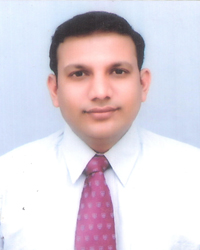
Author
Dr. Vivek AryaDate
10-Oct-2014Category
ArticleLanguage
EnglishTotal Views
3159Total Comments
0Uploader
SaurabhUpload Date
11-Oct-2014Download PDF
-0 MBTop Articles in this Category
Why Hindus converted to Islam and How Aryasamaj Vedic philosophy is the only way to stop it? Read few pages for the book of Sir Herbert Spencer which is an eye opening document. Reference-The people of India by Herbert Spencer page 246-249 The statistics of the Census of 1901 show that during a decade of famine the Muhammadans in India increased by 9 per cent, while the population as a whole rose by only 3 per cent. No doubt these proportions were affected by the fact that the famines were most severe in those parts of the country where Muhammadans are relatively least numerous, but in the fertile and wealthy region of Eastern Bengal, which has never been touched by real famine, though people of small fixed incomes suffer from high prices, their rate of increase was 12*3 per cent, or nearly double that of the Hindus. The figures illustrating the proportion of children tell a similar tale, and indicate that in that part of India the Muhammadans are not only "more enterprising and therefore better off than their Hindu neighbors," but also more prolific and more careful of their offspring.
The reasons are not far to seek. The diet of the Muhammadans is more nourishing and more varied; they are free from the damnosa hereditas of infant marriage enforced by social ostracism ; they are under no temptation to practice female infanticide ; they marry their girls at a more reasonable age, and fewer females become widows while still capable of bearing children. The influence of the itinerant preachers of Islam in its original purity is fast eradicating any tendency to imitate the Hindu prohibition of widow marriage, and Muhammadan widows escape the trials and temptations which beset the Hindu woman who is so unfortunate as to lose her husband while she is still young and attractive. As is pointed out in the Census Report of 1901, "in the case of the intrigues in which Widows so often indulge, the Hindu female who thus becomes enceinte resorts to abortion, while the Musalmani welcomes the prospect of a child as means of bringing pressure upon her paramour and inducing him to marry her." Conversions from Hinduism to Islam must also contribute in some degree to the relatively more rapid growth of the Muhammadan population. Here no appeal to statistics is possible, but a number of specific instances of such changes of Religion were extracted by Mr. Gait, c.i.e., from the reports of Hindu and Muhammadan gentlemen in twenty-four districts and published as Appendix II. to the Bengal Census Report of 1901.
The motives assigned in various cases — names and particulars are usually given — may be grouped somewhat as follows : — (1) Genuine religious conviction of the purity and simplicity of Islam, derived from study of the Muhammadan scriptures or from the preaching of the Maulavis who go round the villages. The conversion of high-caste Hindus, Brahmans, Rajputs, Kayasths and the like is commonly ascribed to this cause. We hear, for example, from a Hindu source, of a wealthy Kayasth landholder of Eastern Bengal, who was suspected of holding unorthodox views, and consequently found difficulties in getting his daughter married. Indignant at what he deemed persecution, he openly embraced Islam, assumed a Muhammadan name, and testified to his zeal by sacrificing cows "in the precincts of the very building where his father had worshipped the Hindu gods." Muhammadan society gave him a cordial welcome, and his daughter married into a high-class family. His wife, however, refused to change her religion and went back to her own people. (2) The growing desire on the part of the lower Hindu castes to improve their social position leads individuals among them to embrace a creed which seems to offer them a fair chance in life. Malis, Kahars, Goalas, Napits, Kans, Beldars and other castes of similar status furnish numerous illustrations of this tendency. (3) The proverb " Love laughs at caste " accounts for a large number of conversions. Hindus of all ranks of society succumb to the charms of good-looking Musalmani girls, and Muhammadans show themselves equally susceptible to the attractions of Hindu maidens. Hindu widows seek a refuge from their dreary lot in marriage with Muhammadans, while Hindu men who have been caught out in liaisons with girls of lower caste — an affair with a pretty gipsy is one of the instances cited — and find themselves socially stranded, prefer the respectability of Islam to the mixed company of some dubious Vaishnava sect. In all such cases Islam gains and Hinduism loses, for caste rules are rigid and no individual can become a Hindu. These irregular attachments sometimes give rise to embarrassing situations. A Hindu gentleman of Eastern Bengal relates how a high-caste Hindu physician saw in the course of his practice a very handsome Muhammadan girl and fell so hopelessly in love that he wanted to marry her. Her father insisted that he must turn Muhammadan, but after he had done so refused to give him the girl. Meanwhile he had of course been cast off by his own people and had become a social derelict. (4) Causes connected with taboos on food and drink and with various caste misdemeanors have also to be taken into account. Hindus in sickness or distress are tended by Muhammadans and take food and water from their hands ; the caste excommunicates them and they join the ranks of a more merciful faith. It is needless to observe that none of these causes, nor all of them taken together, exercise an influence wide or potent enough to bring about a great Islamic revival in India. The day of conversions en masse has passed, and there are no signs of its return. Nevertheless certain tendencies are discernible which may add materially to the number of individual conversions. On the one hand, the Muhammadans may raise their standard of education, they may organize and consolidate their influence, they may establish their claim to larger representation in the Legislative Councils and in Government service, and they may thus come to play in Indian public life a part more worthy of the history and traditions of their faith. On the other hand, the spread of English education among the middle and lower ranks of Hindus may lead to a revolt against the intolerance of the higher castes, and in particular against their virtual monopoly of place and power. In Southern India whole castes have been known to become Muhammadans because the Brahmans would not allow them to enter Hindu temples and compelled them to worship outside. It is conceivable that other castes in other parts of India will someday realize that for the low-born Hindu the shortest road to success in life, whether at the bar or in the public service, may lie through the portals of Islam. Only Aryasamaj provides the SOLUTION to these problems. It rejects Castism and considers all man as equal and son of almighty God.
The division is based on profession not on the basis of birth. It rejects all cumbersome rituals which are mainly superstitions and which are considered as unhealthy practices on name of Hinduism. It freely admits anyone who is non Hindu by faith on name of Shuddhi thus increasing the strength and number of our society. It does not follow untouchability thus there is no restriction in intercaste dining and marrying. It never excommunicates anyone so there is no provision to decrease the numbers of our own society members. The day Hindus will learn the message of great seer swami Dayanand. The day Hindus will not be considered as dying race.




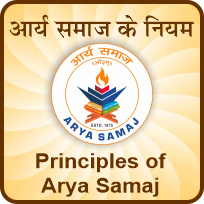







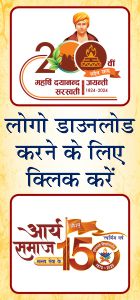
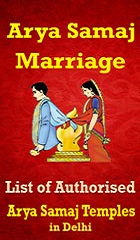
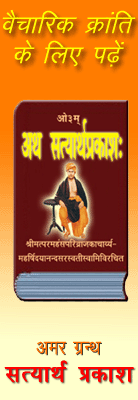


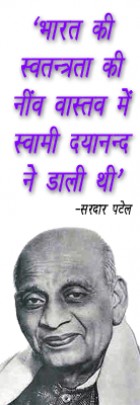
ALL COMMENTS (0)